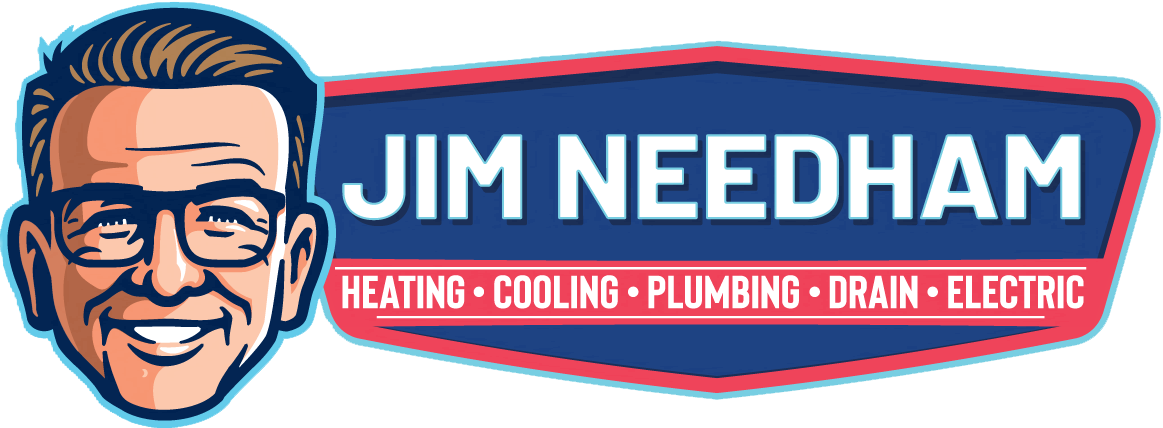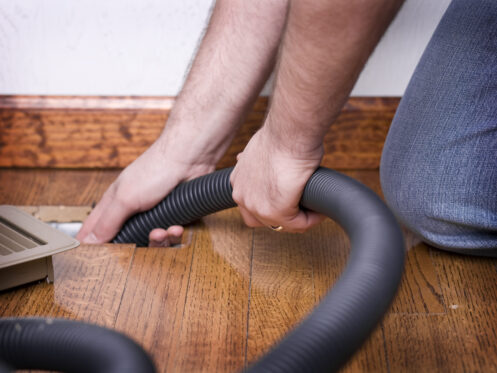Duct cleaning is an important part of maintaining the HVAC system in your Thornton, CO home. Although HVAC air filters extract airborne contaminants like dust, lint, and hair, smaller particulates pass right through them. Along with blown-off filter debris, these micro-fine particulates can get trapped in your air handler and ducting or accumulate behind your air vents. Leaky and poorly sealed ducting can also take allergens in via dusty crawlspaces, basements, and attics. With spring ushering in copious amounts of tree and grass pollen, it’s the perfect time to have your HVAC air ducts cleaned. Read on to learn how professional duct cleaning can give the seasonal allergy sufferers in your home springtime relief.
What Is Air Duct Cleaning and How Often Should You Schedule It?
Not to be confused with annual duct maintenance, duct cleaning is a secondary service that eliminates built-up debris, germs, and odors. According to the United States Environmental Protection Agency (EPA), homeowners can schedule duct cleaning on an as-needed basis. For instance, if you recently treated a pest infestation in your ductwork, duct cleaning will clear out all of the wings, exoskeletons, feces, fur, and food that your unwanted guests left behind. Homeowners might schedule duct cleaning after or during major mold treatments, following building renovations, or after any other event that generates or kicks up lots of particulate matter.
According to the National Air Duct Cleaners Association (NADCA), homeowners can enjoy optimum indoor air quality (IAQ) benefits by scheduling duct cleaning every two to three years instead. These services use negative air pressure, vacuum suction, and mechanical agitation to loosen trapped debris and extract it. When necessary, HVAC companies additionally apply commercial-grade deodorizing and sanitizing agents. These solutions eliminate pungent odors and odor-causing pathogens.
Duct cleaning addresses:
- Supply and return air ducts
- Air registers, grilles, and vents
- Blower motors and blower motor fans
- Condensate drain lines and drip pans
- Evaporator and condenser coils
Depending upon the age and integrity of ducting, we use push-and-pull vacuum systems, rotary brushes, air whips, compressed air, motorized agitators, and more.
How Duct Cleaning Helps Allergy Sufferers
Allergy attacks occur when the body is exposed to allergens and overreacts. For instance, if you breathe in mold or pollen, your eyes might water or your nose might run profusely. When foreign substances send the immune system into overdrive, symptoms like coughing, sneezing, and wheezing abound.
Unfortunately, according to the EPA, indoor air can be up to five times more contaminated than the air outside. While this is due in part to constantly off-gassing building materials and the use of chemical-laden air fresheners, surface cleaners, and self-care products, it’s largely the result of poor ventilation. The pollen, dander, mold, and dust that gets tracked in by building residents stays trapped indoors due to tightly sealed building materials.
Air filters capture and retain a fair amount of allergens. But dust mites, mold, pollen, and pet dander flow right through most of them. Whether bypassing your filter, blowing off dirty filters, or sneaking into your ducting via unsealed gaps and cracks, these same allergens could be circulating throughout your indoor air indefinitely.
Duct cleaning leaves HVAC air ducts completely pristine. When paired with other measures such as duct sealing, it can greatly minimize the amount of allergy triggers that residents are exposed to. With fewer allergy triggers indoors, your living space can become a place of sanctuary and respite for people who suffer non-stop outside whenever pollen counts soar.
Create Cleaner Indoor Air Overall
Whether mold, pollen, or dander are your allergy triggers, duct cleaning will create cleaner indoor air overall. Thus, not only will you have fewer allergens bogging your nasal passages and lungs down, but your air ducts will also harbor fewer illness-causing pathogens and harmful, volatile organic compounds (VOCs). With clean air ducts and cleaner indoor air, many air conditioners and heat pumps offer better humidity regulation and temperature control.
Seasonal Concerns for Allergy Sufferers in Thornton
In early spring, tree pollen levels skyrocket. From February through May, local trees release enough pollen to keep allergy sufferers on high alert. When this pollen isn’t entering homes via exhaust vents, opened windows and doors, it’s seeping into homes via cracks and gaps in building materials or getting tracked in on residents’ shoes.
In mid to late May, grass pollen season starts. Although some grass allergies manifest as raised welts on the skin after physically rolling in or sitting on new grass, many grass allergy sufferers in the region deal with sneezing, itchy eyes, and respiratory troubles throughout this time.
Additional Benefits of Having Your HVAC Air Ducts Cleaned
Cleaning your air ducts in spring is a great way to boost your IAQ ahead of allergy season. However, if you haven’t had your air ducts cleaned in a while, duct cleaning could additionally lead to significant energy savings. These services optimize airflow throughout ducted systems and help prevent problems like icing and overheating. They reduce HVAC system stress and promote higher levels of efficiency. Thus, your HVAC system will work better and you’ll pay less to use it.
Cleaning Up After Pests Prevents New Pest Problems
Pest infestations in HVAC ductwork can cause non-stop problems for allergy sufferers in spring. Not only does duct cleaning remove the detritus that old pests have left behind, but it also eliminates pest odors. When running through air ducts, rats, mice, and other rodents often paint duct walls with their oily bodies to scent them with their pheromones. Having your air ducts cleaned before spring arrives ensures that these chemical attractants don’t lead to all-new rodent populations.
Pairing Duct Cleaning With Duct Sealing and Insulating Services
Cleaning your air ducts every two to three years will get rid of debris that has escaped or blown off your air filter. However, it’s also important to prevent unfiltered air from seeping into your air ducts via loose and poorly sealed connections. That’s why we recommend scheduling duct sealing and insulating services after duct cleaning if you haven’t had these things done already. Whether using mastic seal, Aeroseal, or duct sealing tape, this is a great way to keep air ducts from drawing in dusty, allergen-ridden air from attic areas, basements, attached garages, and crawlspaces.
Is Duct Cleaning Enough for the Allergy Sufferers In Your Home?
Whether you perform duct sealing on an as-needed basis or every two to three years, it’s an important part of protecting and improving your IAQ for allergy sufferers. However, if allergy season proves especially severe for building residents or if you have year-round IAQ concerns, you might want to pair regular duct cleaning with integrated HVAC accessories. IAQ equipment like air purifiers, air scrubbers, and media filters eliminate the microfine allergens and contaminants that many standard and upgraded air filters cannot.
With over 30 years of experience, we help residents of Thornton, CO maintain healthy, comfortable homes. We offer first-rate heating, cooling, plumbing, and drain services. We also offer top-notch duct repair, duct cleaning and duct sealing services. To schedule an appointment, contact Jim Needham Heating Cooling Plumbing and Drain now.


